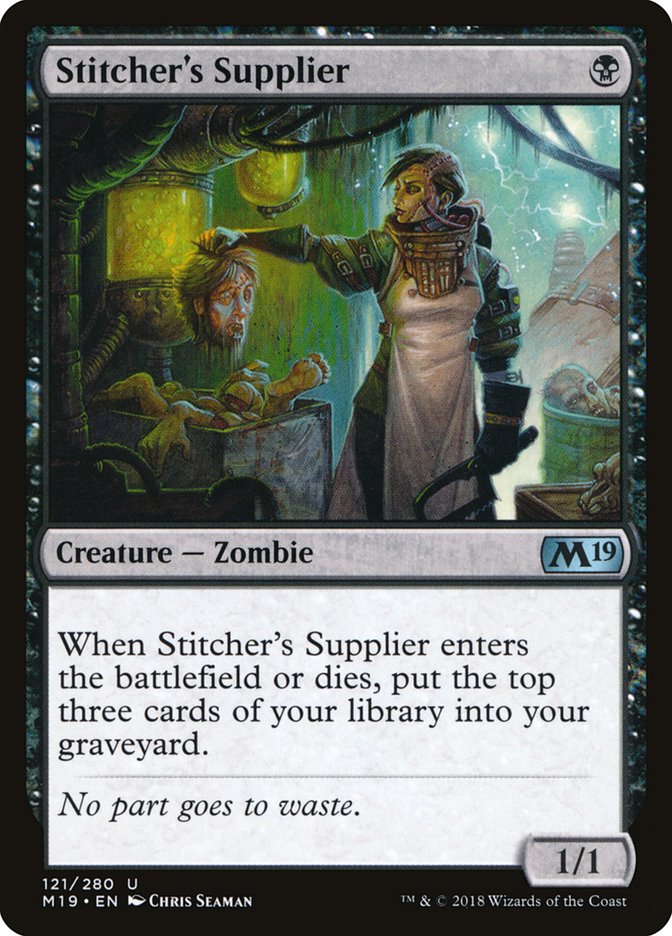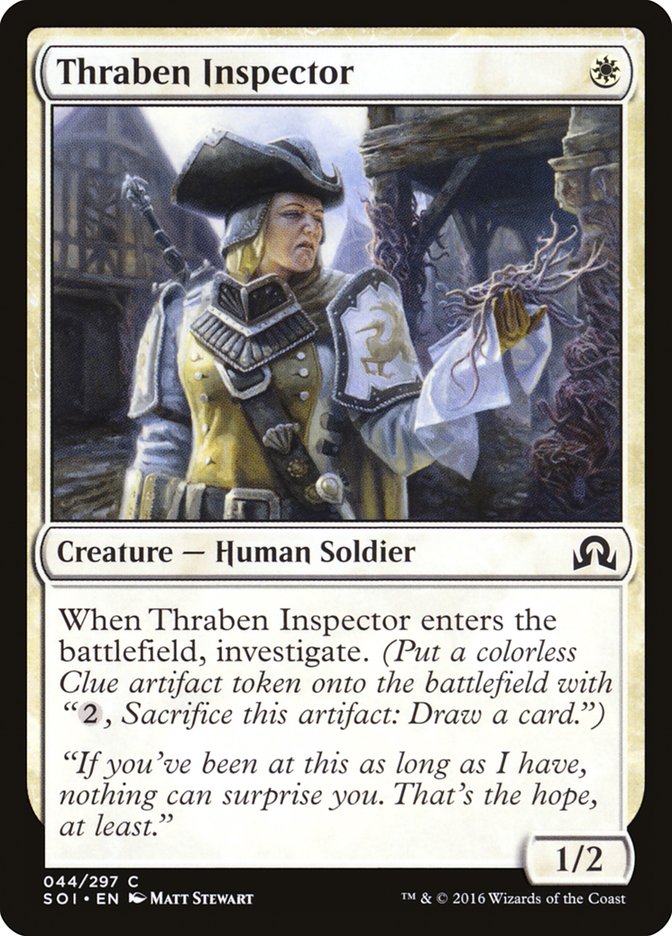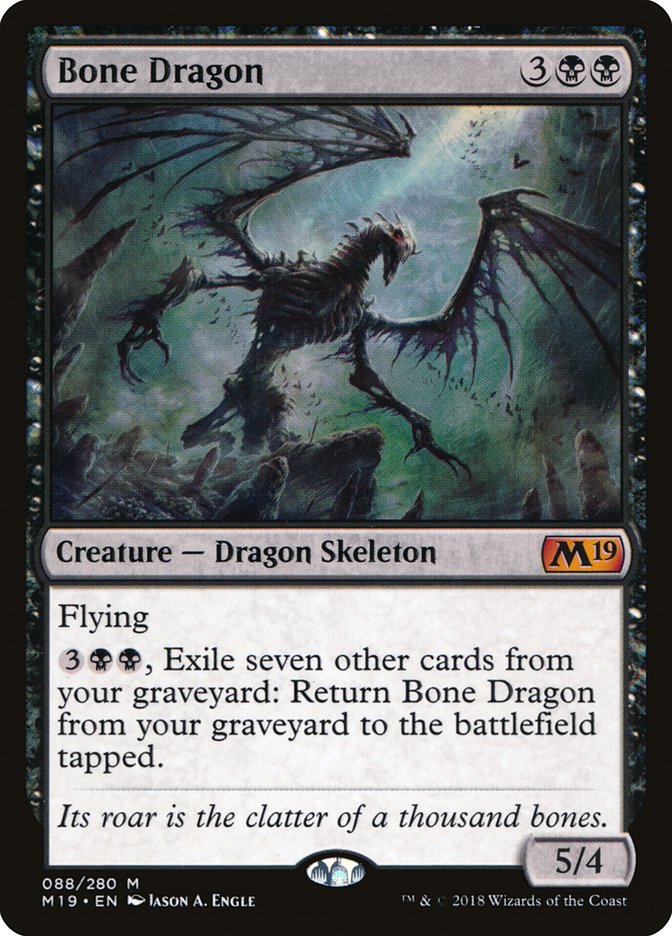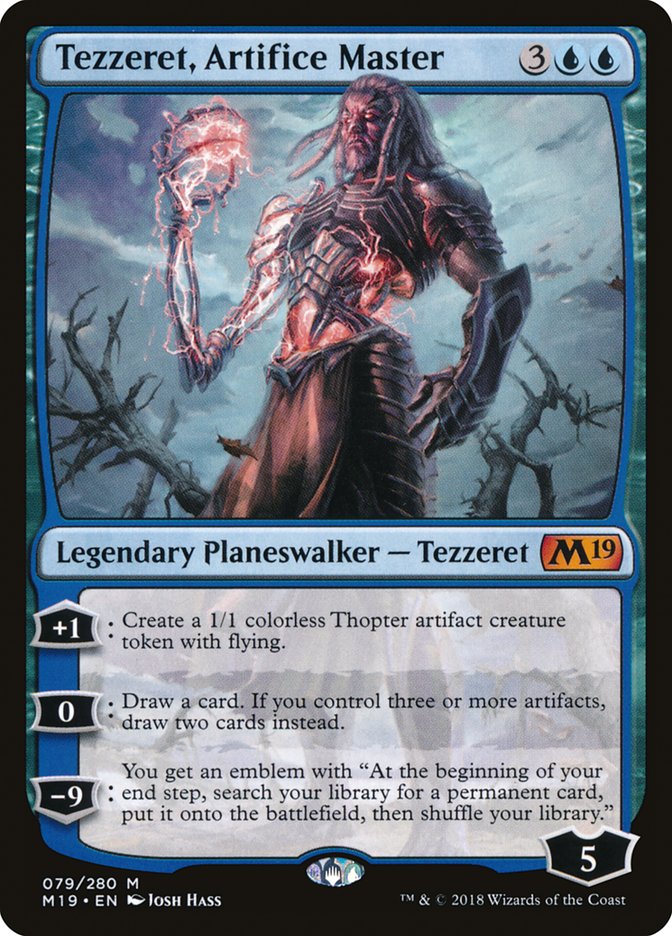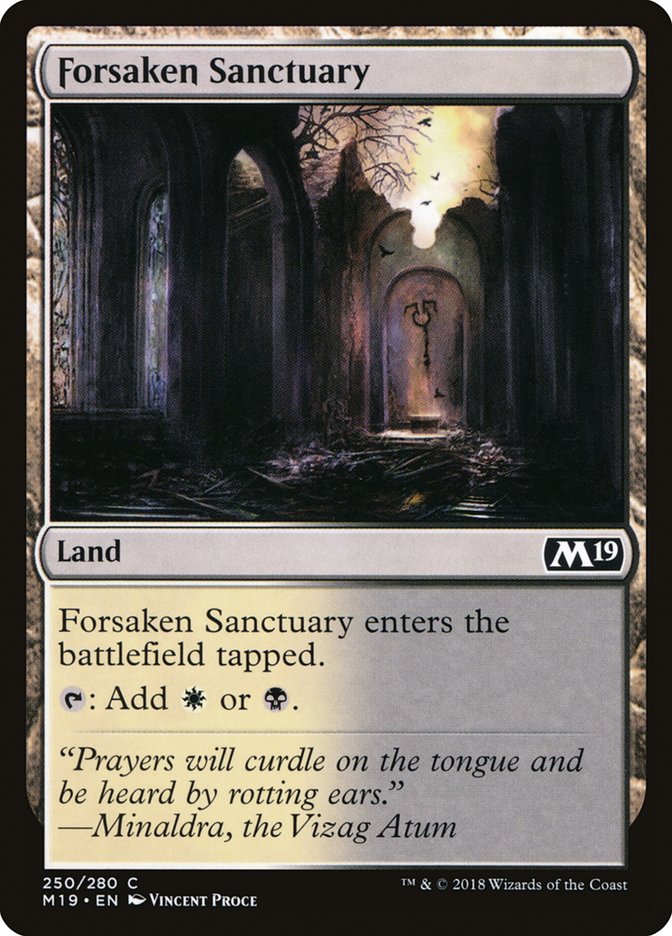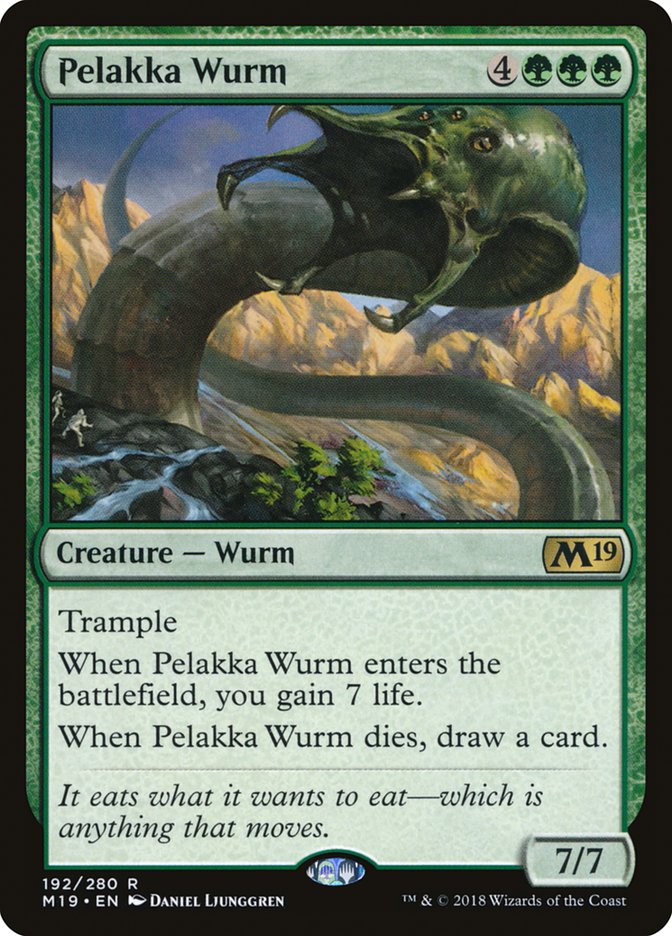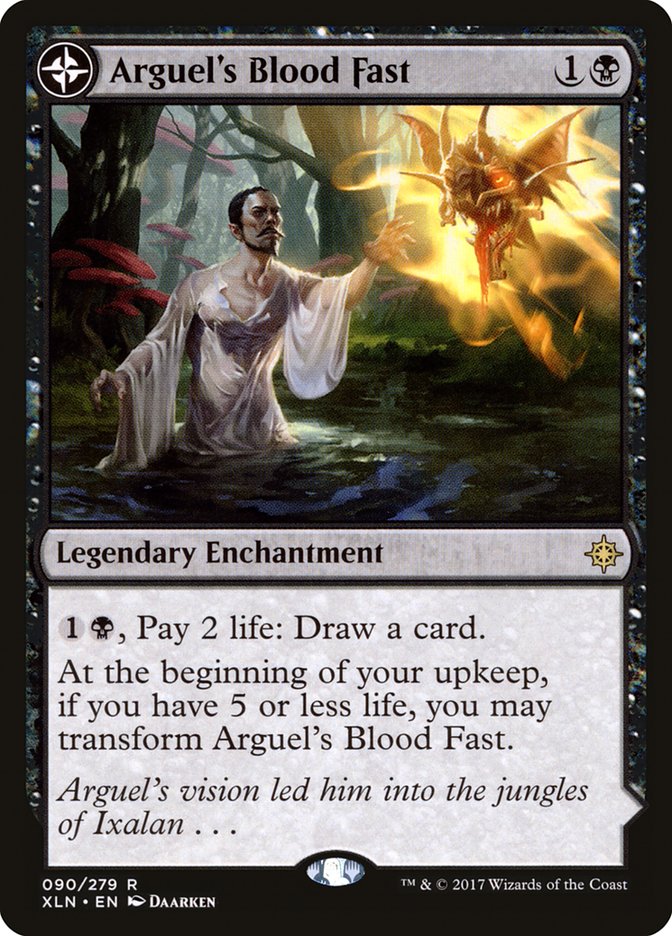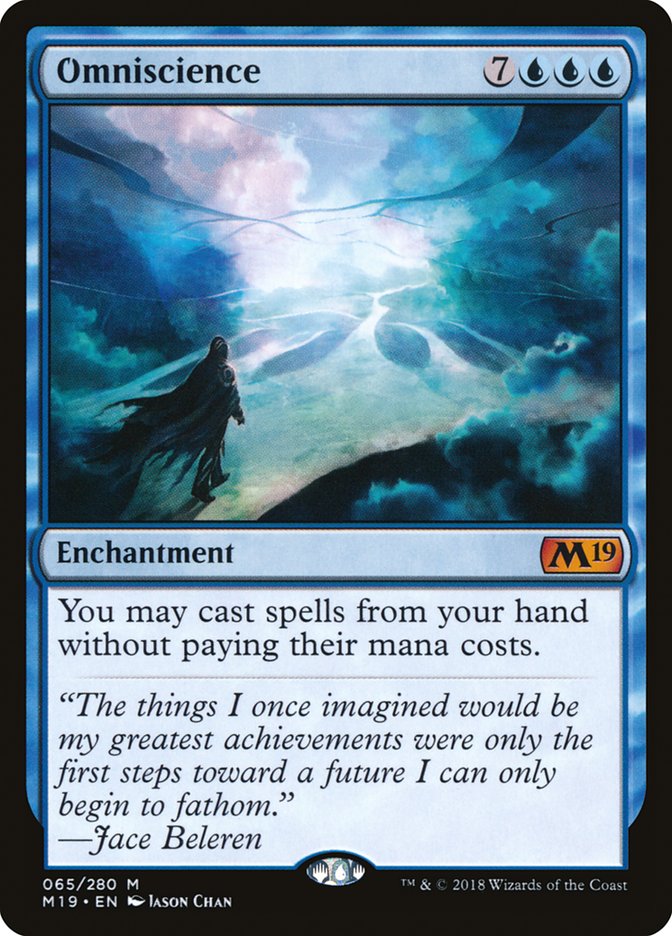Stitcher’s Supplier will have the biggest impact on Standard with Core Set 2019.
Last week
, I covered Stitcher’s Supplier in strictly a Zombie deck, but that isn’t
where this card will ultimately shine the most — Its true calling is
obviously going harder on graveyard synergies and there’s no shortage of
potential decks there. It might seem like my opinion of Stitcher’s Supplier
is gratuitous, but I’m surprised very few other people seem to share my
opinion. Not long ago, people weren’t very high on Thraben Inspector
either.
While obviously a strong comparison to make, it’s not that far off base.
Thraben Inspector could be put in anything that had white mana on Turn 1
and perform reasonably well. The same can’t be said for Stitcher’s
Supplier, but just because Stitcher’s Supplier doesn’t slot into every
single deck doesn’t mean that it won’t be all over the place.
Very rarely does your one-drop offer you as much value as Stitcher’s
Supplier (or Thraben Inspector). You won’t be getting any hard card
advantage, but getting access to more resources, even in the graveyard, is
something you can easily take advantage of. The body is relevant for
combat, crewing, and various synergies, such as Gate to the Afterlife and
God-Pharaoh’s Gift.
For example:
Creatures (28)
- 4 Walking Ballista
- 2 The Scarab God
- 4 Champion of Wits
- 4 Kitesail Freebooter
- 4 Seekers' Squire
- 3 Ravenous Chupacabra
- 1 Bone Dragon
- 4 Stitcher's Supplier
- 2 Graveyard Marshal
Lands (23)
Spells (9)

This deck actually has a lot of potential. Not only have decks like these
been on the cusp of Tier 1 for a while, but Core Set 2019 adds
more to the archetype than just Stitcher’s Supplier. Now that you have a
black one-drop to play instead of Minister of Inquiries, your blue
component can be cut down to the minimum. That allows you to play Grave
Marshal as a reasonable backup plan, both for pre-board and post-board
games.
Bone Dragon might have a huge cost and a somewhat measly reward, but with
all the self-milling you’re doing, it shouldn’t be an unreasonable cost to
play. If the game goes long and you can’t find a way to get a God-Pharaoh’s
Gift onto the battlefield, maybe the backup Dragon will suffice.
After sideboard, I’d imagine that your artifacts will be targeted harder
than your graveyard, so it’s alright to use things like Grave Marshal, Bone
Dragon, The Scarab God, and Liliana as your backup plan. Those threats plus
some interaction should allow you to seamlessly transition into a midrange
deck.
God-Pharaoh’s Gift has always had the potential to be the False Tempo
archetype in Standard, but it needed to be able to lean on its backup plan.
Cards like Minister of Inquiries just weren’t cutting it.
Creatures (1)
Planeswalkers (8)
Lands (22)
Spells (29)
- 4 Prophetic Prism
- 3 Battle at the Bridge
- 3 Fatal Push
- 3 Renegade Map
- 4 Metallic Rebuke
- 2 Sorcerous Spyglass
- 2 Vraska's Contempt
- 2 Treasure Map
- 2 Cast Down
- 4 Fountain of Renewal
Sideboard

I’ve deviated from the Magic Online normalcy here because focusing on
Tezzeret, Artifice Master rather than Herald of Anguish changes the
“improvise” deck dramatically. Rather than requiring cards like Servo
Schematic and Cogworker’s Puzzleknot to play a Herald of Anguish as quickly
as possible, you can afford to be a bit more leisurely.
Your win condition is going to come via your planeswalkers. Both provide
absurd amounts of card advantage but can also help clock your opponent when
necessary. If you have things mostly locked up and need to close the game
quickly, you can build up Tezzeret’s ultimate to find your singleton copy
of The Scarab God.
Everyone seems to have a positive opinion on Tezzeret, so this seems like
one of the decks that will get figured out sooner rather than later.
Creatures (23)
- 4 Bomat Courier
- 4 Scrapheap Scrounger
- 4 Toolcraft Exemplar
- 4 Skymarcher Aspirant
- 3 Snubhorn Sentry
- 4 Benalish Marshal
Lands (21)
Spells (16)
Sideboard

Yes, your only hope against Goblin Chainwhirler is to be on the play with
Benalish Marshal or Pride of the Conquerors. Even then, it’s still sketchy.
Aside from that admittedly huge issue, this deck could be great. It can
easily get under control and midrange, especially since those decks are
lacking sweepers at the moment. Heroic Reinforcements is particularly
powerful at closing games and Benalish Marshal gives you a reasonable
amount of staying power.
There likely exists a world where you don’t need to be as all-in with cards
like Skymarcher Aspirant, Snubhorn Sentry, and Pride of Conquerors, but
that will be more apparent as the metagame gets fleshed out. A slightly
larger, more resilient version could prove to be much better.
Spells (35)

Maybe this deck isn’t the absolute worst now?
There’s an additional cheap artifact in Fountain of Renewal, which helps
get you that extra turn to piece together your combo, plus Sai, Master
Thopterist as a cheap threat in sideboard games. Maybe this deck could also
benefit from a transformational sideboard plan.
You know what doesn’t need a crazy sideboard plan? Tribal beatdown.
Creatures (37)
- 4 Llanowar Elves
- 4 Metallic Mimic
- 2 Rishkar, Peema Renegade
- 4 Walking Ballista
- 4 Narnam Renegade
- 3 Marwyn, the Nurturer
- 4 Steel Leaf Champion
- 4 Shalai, Voice of Plenty
- 4 Elvish Clancaller
- 4 Thorn Lieutenant
Lands (23)
Sideboard

Goblin Chainwhirler, etc. Still, cool deck.
Creatures (17)
- 3 Walking Ballista
- 4 Kitesail Freebooter
- 4 Knight of Malice
- 2 Shalai, Voice of Plenty
- 4 Graveyard Marshal
Planeswalkers (4)
Lands (27)
Spells (12)

This deck was surprisingly difficult to build. All I wanted to do was
figure out how to pair Ajani, Adversary of Tyrants with some of the best
two-drops in Standard. Most of those cards, including Grave Marshal, are
black, which makes the mana more than a little awkward. Once you decide you
want to be greedy and add History of Benalia into the mix, that’s when
things get really bad.
Enter Forsaken Sanctuary.
For some reason, trying to cast Grave Marshal into History of Benalia or
Ajani is terrifying, even if people are currently casting Goblin
Chainwhirler into Vraska’s Contempt. Maybe it’s because of the immediacy of
needing to hit your two-drop in decks like these compared to having enough
time to cast your powerful cards in a R/B Midrange deck. Either way, this
version of W/B might be more of a headache than it’s worth.
If you can get the mana to work, the overall game plan should be rock solid
though. You’re a little bit smaller than some of the other decks currently
in Standard, so that might mean you issues dealing with Hour of Promise,
Torrential Gearhulk, and other big, powerful cards, but that’s always been
an issue for W/B.
Creatures (21)
- 2 Pelakka Wurm
- 2 Ramunap Excavator
- 3 The Scarab God
- 4 Champion of Wits
- 2 Ravenous Chupacabra
- 4 Wayward Swordtooth
- 4 Stitcher's Supplier
Planeswalkers (3)
Lands (28)
Spells (8)
Sideboard

Yes, that is 28 land. Yes, this deck is also very weird. Oddly enough, it’s
one of the decks that I think could survive in a Goblin
Chainwhirler-infested Standard.
The issue with Goblin Chainwhirler isn’t just that it’s oppressive towards
a certain class of decks, it’s the fact that it adds an additional layer of
power onto a format that is already stacked with powerful red cards. Red
will remain a prominent part of the metagame regardless, and this deck
doesn’t particularly mind that.
This 28 land special doesn’t have a specific weakness to Goblin
Chainwhirler itself, plus it has excellent removal, and ways to overpower
nearly anyone in the late-game. Don’t be surprised when folks are going
over the top of you with Pelakka Wurm in a few weeks. The self-mill
combined with The Scarab God and Liliana, Death’s Majesty is very real.
Milling yourself also helps set up light combos with Wayward Swordtooth and
Ramunap Excavator. Either card is fine on its own, but together, they are
truly monstrous, especially with something like Evolving Wilds.
Arguel’s Blood Fast continues to be a mainstay in my black midrange decks,
especially because of how well Temple of Aclazotz works with The Scarab
God. Many may point to that interaction and say it’s “win more,” but I
disagree. You can lose the game after you cast The Scarab God in many
different ways. However, when you also have a Diamond Valley on the
battlefield, it makes things ten times as difficult for your opponent to
actually put you away.
Maybe not playing Hour of Promise is a mistake? It seems better to spend
your mana on developing your position with creatures, gaining velocity and
making land drops that way. Hour of Promise is better suited to a different
task.
Planeswalkers (4)
Lands (26)
Spells (30)
- 2 Gilded Lotus
- 3 Omniscience
- 2 Pull from Tomorrow
- 4 Spring
- 4 Gift of Paradise
- 4 Hour of Promise
- 4 Settle the Wreckage
- 4 Seal Away
- 3 Nexus of Fate
Sideboard

Bant Ramp was always reasonably good at controlling the game, but their
interaction was always limited. It’s like playing U/W Control with ramp
instead of more counterspells and removal, so that’s understandable. For
the most part, the deck was trying to go over the top of everyone else but
lacked a real way to do that. You just had to hope that your mana advantage
was good enough.
Omniscience already has some Standard success under its belt, and although
it was fringe, Bant Ramp is exactly that. Now you actually have a card
that’s worth it to ramp into while also having Nexus of Fate as a powerful
card to cast off Omniscience. There’s more than a little bit of awkwardness
with Pull from Tomorrow and Spring//Mind, but it is what it is. I can’t
imagine you would lose many games where you get to resolve Omniscience. The
only thing you need to worry about is how to buy enough time to get to that
point.
To that end, you could also try to build Turbo-Fog with cards like Root
Snare instead of Seal Away, but the more controlling aspect seems like a
better choice.
As for everything else? I tried very, very hard to come up with a remotely
reasonable decklist for Satyr Enchanter, but nothing looked doable. There’s
Sram, Senior Edificer, but we haven’t gotten any great auras or creatures
to put them on. Vine Mare at four mana doesn’t exactly count. White has no
shortage of good enchantments, so if you wanted to build a controlling
white deck (maybe with Approach of the Second Sun) that happened to have a
draw engine, that could potentially work.
Sarkhan, Fireblood and Stitcher’s Supplier are the cards I’m most excited
to see in action. There’s no shortage of cards like Fraying Omnipotence
that leave me scratching my head, wondering if there’s anything there. Time
will tell!


